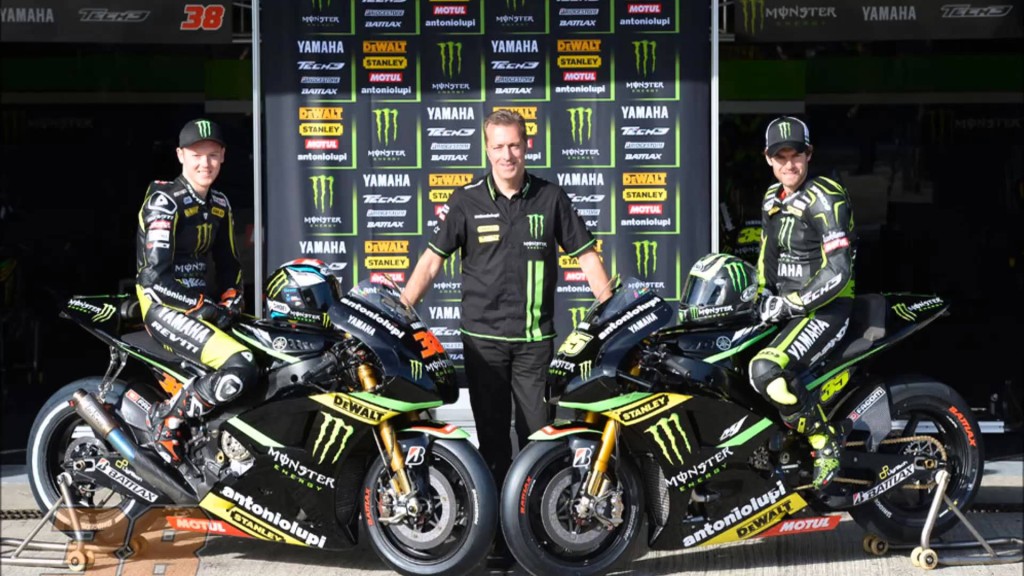World Championship GP is the leading championship road racing of
motoGP.
GP stands for Grand Prix. Grand Prix motorcycles are purpose-built racing machines that are neither available for purchase by the general public nor can be ridden legally on roads. Currently it is divided into three categories: Moto2, Moto3 and MotoGP. All three use four-stroke engine. In 2010, Moto2 600 cc 4-stroke has been introduced instead of 250 cc 2-stroke engine. In 2012, 2-strokes 125 cc were replaced by Moto3 250 cc 4-stroke class having weight limit 65 kg including fuel. The capacity of engine for MotoGP has incremented from 800 to thousand cc.
The MotoGP
circuits are in these countries: USA, Spain, Qatar, France, Italy, Netherlands, Germany, Czech Republic, San Marino, Australia, Malaysia, UK and Japan.
Bikes
The motorcycles for
MotoGP
are built for racing purpose only, and not available in market for the general public and it’s riding on public roads are also illegal. The technical guideline to which a GP team must hold on is that, when they build bikes for MotoGP racing, they should provide a simple guide of machinery type to the riders use.
Engine sizes permitted in MotoGP
In the year of 2012, permitted maximum engine displacement is 1000cc maximum, with maximum 4 cylinders. Maximum 5 engines can be utilizes by every permanent rider contracted for all scheduled races of that season. For breaking this rule there is penalty for rider that he will start ten seconds after the race starts.
Minimum weights permitted in MotoGP are:
Up to 800cc weight is 150 kg
From 801 to 1000cc weight is 160 kg
SHOWCASE DESIGN
GP bikes are manufactured to win races and to show the design and technical potentials their manufacturers. Therefore the bikes are constructed from hardwearing, expensive and lightest materials as far as possible..
When these bikes are on their tracks a huge amount of fans watch it, the showcase displays the name of manufacturers, sponsors and also race numbers. Hence a well design showcase for bike is also important. Stylish showcase attracts more number of fans.
Engines
2 and 4-stroke engines – 2-stroke engine was primary in the World Championship up to 2002. After that the 990cc four-stroke engine was introduced, reflecting production trends. Two-stroke bikes became the popular from 1960s to 1990s.
The main difference between these two engines types are their process of combustion: the 4 strokes has the steps 1.intake 2.Compression 3.combustion and 4.exhaust. All movements occur through 2 crankshaft rotations/ working cycle.
The 2-stroke engine completes these four processes in two stroke of piston only.
DEVELOPMENT THROUGH THE YEARS
The major change in the basic class is the change from four-stroke to two-stroke engines and again back to four-stroke engines in 2002.This phenomena reflects the requirement of technical development and improvement in the sports.
In the earlier days, the premier class was conquered by four-stroke vehicles from mainly European manufacturers. The starting four-stroke engines were heavy, cumbersome and required more maintenance and also not more reliable.
During the age of 1960s Japanese manufacturers like Yamaha and Suzuki started to produce smaller cylinder classes having two-stroke machinery. These lighter two-stroke gave more possibilities and was assumed as the motor sports’ future.
The 1970s and 1980s is a duration of technical changes that promote even private garage motorcycles to participate in Grand Prix.
MotoGP bike versus Formula 1 Cars
Cars are more quicker during round bends because of much higher percentage of contact of tyre which gives up much greater grip to the vehicle. On the other hand bikes accelerate much faster because they have better ratio of power to weight.
The two main factors for determining grip of tyres and corner speed are mechanical and aerodynamics. Bikes have curved tyres, which gives relatively low contact with road (track) and hence no meaningful aerodynamic, so causes increased lap times.
But after all, these all depend on rider skills.
MotoGP rider
If you want to be a MotoGP rider, first of all you need to have complete understanding and knowledge of the sport as well as of the bike. After becoming familiar with bikes and rules, next step is gaining formal training, for which you have any authorized racing school. When you become a trained rider, you need to sharp your skills, by reglar practice and participating in many races.
After giving well performance in national championships, the international events are ready for you like Asia GP and FIMUAM. Doing well in these events will gives you international recognition. Then becoming a famous face of racing union, will enable you for achieving sponsorship which will support your abilities.
